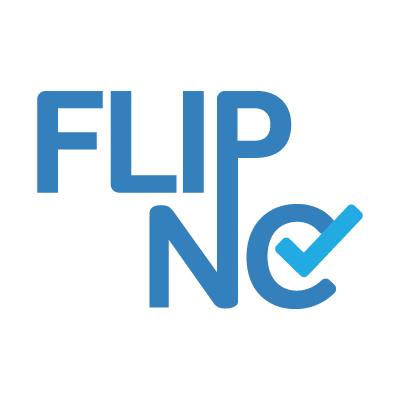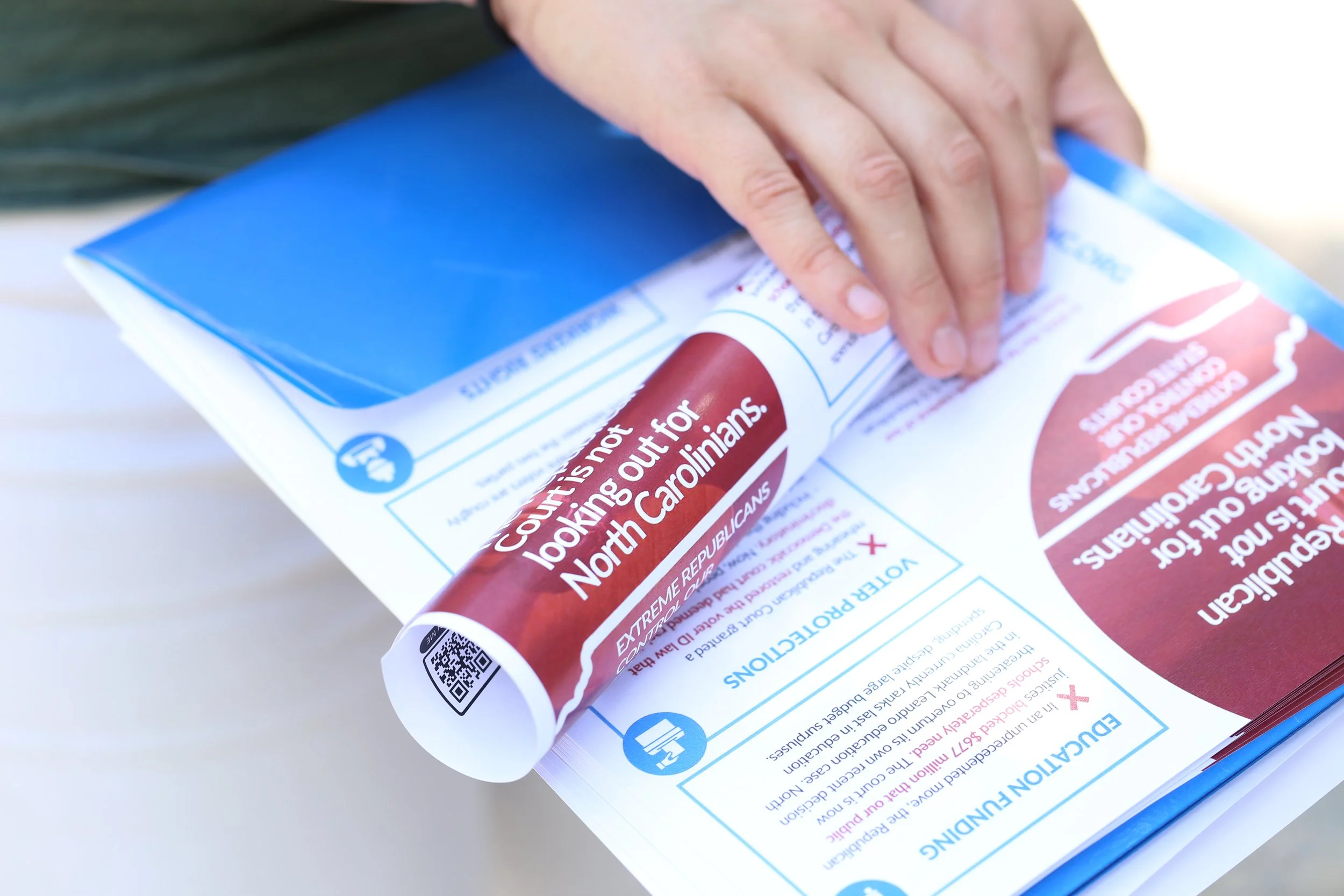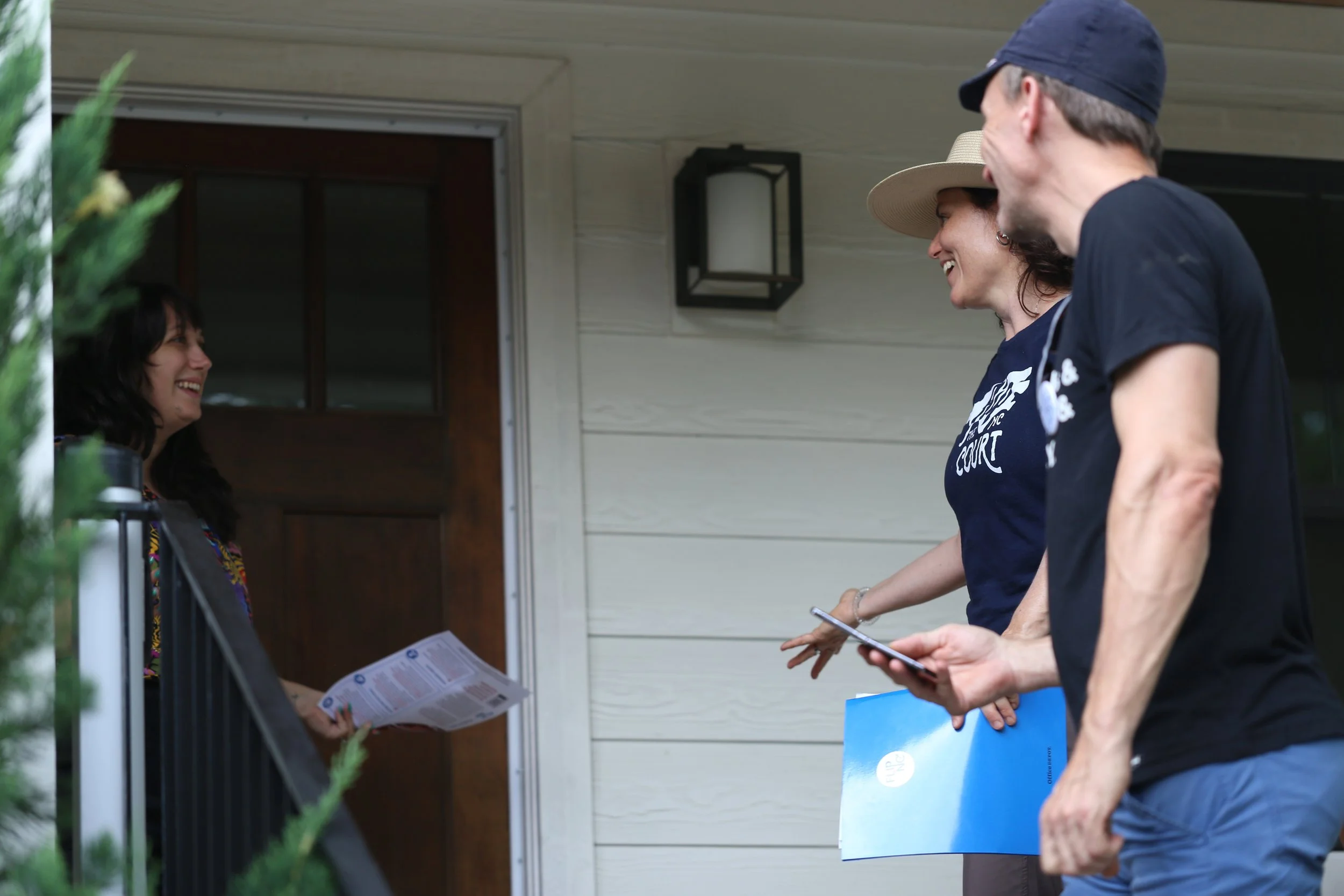Here in North Carolina, our first electoral opportunity to begin prying back our state and our country from partisan extremists comes in 2026, when what happens at ballot boxes across the state will shape what happens in Raleigh and Washington, D.C. – both in the near term and for years to come.
In the 2026 midterms, our work is to:
Oust Thom Tillis and elect a Democrat to the U.S. Senate
Re-elect Justice Anita Earls to the NC Supreme Court
Hold the 3 Court of Appeals seats currently held by Democrats
Prevent a Republican supermajority in our state legislature
This election is sooner than you think. And with midterm conditions and a backlash to Trump, 2026 has the potential to be a very favorable election year for Democrats.
But there’s no time to lose. To win these races, the time to start is now, and we must use our time strategically; we can’t afford to waste time on ineffective voter outreach.
The great news is that midterms give us a greater opportunity to impact the outcome than presidential years, when the field is saturated with money and activity. And we know what works. Drawing on analysis and lessons from 2024 and 2018 – the last Trump midterm – we can build the blue wave we need for these critical victories.
The Midterm Turnout Gap – and the Opportunity
In a midterm, turnout is often more than 20 points lower than in a presidential election, and that means we have a huge opportunity to win by turning out left-leaning presidential-year voters who typically sit out the midterms. These folks are already voters, but they’re often less aware of downballot races or why these races matter for their lives. So in a midterm, the easiest and most effective action we can take to increase votes for Democrats is to reach left-leaning, less-consistent voters with information about why these races matter. Turning out those voters in 2026 is key in building the blue wave.
And if you care about more than a single race, turnout is also the safest midterm focus. Turning out one more left-leaning voter can mean twenty or more votes for Democrats up and down the ballot, while trying to persuade a low-engagement swing voter in, for example, the US Senate race risks turning them out for one Democrat (in that race) but also twenty or more Republicans (in all the other races on the ballot). So our number one priority for 2026 is turnout, turnout, turnout.
What 2018 Taught Us – and Why It Matters Now
The 2018 midterm, during Trump’s first term, was a “blue moon” election year, with no statewide federal races at the top of the ticket. In a blue moon election, we would typically expect low turnout. Instead, 2018 saw the highest midterm turnout in North Carolina this century, with a blue wave that broke the Republican supermajorities in both chambers of our state legislature.
But the blue wave was not evenly distributed across the state; it was heavily driven by increased left-leaning turnout leading to big swings in competitive legislative districts, where groups like FLIP NC were out talking with voters about their concerns, the stakes of these elections that most voters knew little about, and why their vote mattered.
As the results rolled in on election night, we saw the clear impact of that work. And our 2018 post-election analysis showed us exactly what worked at increasing turnout – and what didn’t – with clear implications for the 2026 midterms: who to target, when, and how.
Our biggest lessons from 2018:
Start early. The biggest impact came from outreach to left-leaning, less-consistent voters a year or more before Election Day – long before traditional GOTV efforts begin. These voters are harder to reach; early outreach gives us time to try again to reach them.
Target the right voters. Our 2018 program had targeted all left-leaning voters, from moderate to very left-leaning. But our post-election analysis showed that, while we had a significant impact on turnout among more left-leaning voters, we had only a very small effect on a more limited set of moderate voters, and those voters are less likely to vote for Democrats when they do vote. So since 2018, we’ve focused our time and resources exclusively on more reliably left-leaning voters, where we can have a much greater impact.
Just leaving materials behind helps – when they’re the right ones. We found that when voters didn’t answer the door, just leaving materials behind helped increase turnout, but only when we left lit (flyers) focused on highlighting the bad acts of the Republican incumbents. Leaving positive lit focused on Democratic candidates had no impact on turnout.
Building on Lessons from 2024
In 2024, we built on lessons learned from our 2018 and 2020 voter outreach, which focused on competitive legislative races, and turned to our state courts. Even in a heavily saturated presidential year with high baseline turnout, our 2024 post-election analysis showed that our work made a difference – and showed us how we can be even more effective in 2026.
Our biggest takeaways from 2024:
Canvassing was roughly twice as effective per door as lit drop, though lit drop still moved the needle and allowed us to cover more ground faster. Both are valuable tools in our voter outreach toolkit.
Our canvassing and lit drop combined cut ballot drop-off in half in the blue precincts we fully saturated. (Ballot drop-off is when folks come out to vote but don’t complete the full ballot.) In our target races, drop-off is typically only a couple of points, but it can be pivotal in close races. Statewide, FLIP NC’s canvassing and lit drop added an estimated ~700 additional votes for Justice Allison Riggs in reduced ballot drop-off alone – in a race Justice Riggs won by just 734 votes.
Canvassing significantly boosted margins for progressive judicial candidates, especially in Court of Appeals races. This suggests that canvassing was especially helpful in raising awareness about the importance of these lesser-known races.
The Work Starts Now
There are many ways you can help win critical races in 2026. FLIP NC is focused on drawing attention to our state court races and turning out left-leaning voters statewide for races up and down the ballot.
Our canvassing kicks off on Sunday, June 29, in Durham with special guest Justice Anita Earls. Sign up here. More FLIP NC summer canvasses are also posted, and we’ll be adding pop-up canvasses with our partners soon.
Read more here about other ways you can support our state judicial races.
Interested in focusing on legislative races? Our post on 2026 competitive legislative districts is coming soon. Voter outreach to left-leaning voters, focused on down-ballot races like our state legislative and state court races, will drive up-ballot voting and help ensure that the less-engaged voters who do turn out will vote the full ballot.
The work starts now – let’s go!




